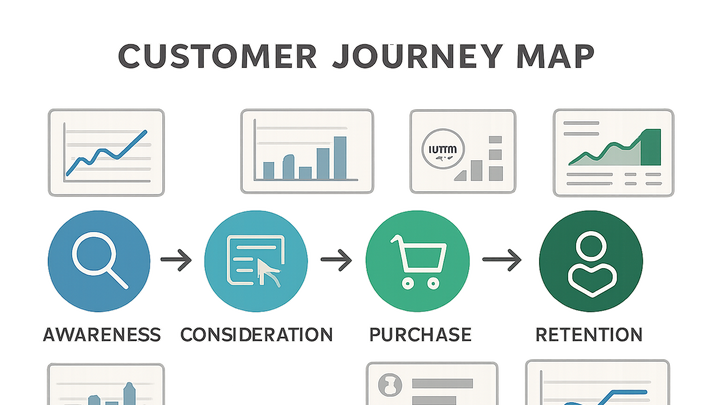Published on 2025-06-29T19:01:38Z
What Is the Customer Journey? Understanding Customer Journey in Campaign Tracking & Analytics
The Customer Journey is the end-to-end path a potential or actual customer takes, from initial awareness through consideration, purchase, retention, and advocacy. In campaign tracking & analytics, mapping this journey helps marketers understand how each interaction influences conversions and loyalty. By identifying key touchpoints—such as paid ads, email campaigns, social media, and website visits—teams can optimize messaging and budget allocation. Tools like Plainsignal enable privacy-friendly, cookie-free behavior tracking, while UTMguru simplifies UTM parameter creation for consistent attribution across channels. Understanding the Customer Journey empowers data-driven decisions, improves personalization, and boosts ROI. This article explores why it matters, its stages, how to track it with modern SaaS tools, and best practices for journey mapping.
Customer journey
A Customer Journey maps each touchpoint from awareness to advocacy to guide analytics, attribution, and campaign optimization.
Why the Customer Journey Matters
Understanding the Customer Journey is essential for uncovering how prospects interact with your brand, which helps optimize campaigns and budgets effectively.
-
Improved attribution
By mapping each touchpoint, teams can accurately attribute conversions to specific channels and campaigns, reducing guesswork.
-
Enhanced personalization
Knowing where users are in their journey allows you to tailor messages, offers, and content to their needs and interests.
-
Optimized resource allocation
Identifying high-impact stages and drop-off points enables marketers to invest in the most effective tactics and channels.
Stages of the Customer Journey
A typical Customer Journey comprises multiple stages. Each stage has unique user intents and metrics to track.
-
Awareness
Prospects first encounter your brand through ads, social media, referrals, or organic search.
- Channels:
Social ads, display networks, SEO, influencer partnerships
- Channels:
-
Consideration
Users evaluate options, compare features, read reviews, and engage with educational content.
- Content types:
Blogs, webinars, whitepapers, comparison pages
- Content types:
-
Decision
Prospects decide to purchase, often driven by promotions, free trials, or demos.
- Conversion tactics:
Discount codes, live chat support, product demos
- Conversion tactics:
-
Retention
After purchase, focus shifts to onboarding, satisfaction surveys, and loyalty incentives.
- Retention strategies:
Email drip campaigns, loyalty programs, in-app messaging
- Retention strategies:
-
Advocacy
Delighted customers become advocates, driving referrals and user-generated content.
- Advocacy channels:
Referral programs, reviews, social sharing
- Advocacy channels:
Tracking the Customer Journey with SaaS Tools
Use modern analytics and UTM tools to capture, attribute, and analyze each touchpoint across the journey.
-
Plainsignal for cookie-free analytics
PlainSignal offers simple, privacy-first tracking without cookies. Install the script on your site to capture pageviews and events anonymously.
Example integration:
<link rel="preconnect" href="//eu.plainsignal.com/" crossorigin /> <script defer data-do="yourwebsitedomain.com" data-id="0GQV1xmtzQQ" data-api="//eu.plainsignal.com" src="//cdn.plainsignal.com/plainsignal-min.js"></script> -
Utmguru for utm management
UTMGuru simplifies building, generating, and storing UTM parameters. Use the web app or Chrome extension to maintain consistent campaign tagging and avoid data fragmentation.
Best Practices for Mapping the Customer Journey
Follow these guidelines to build accurate, actionable journey maps that drive continuous optimization.
-
Integrate cross-channel data
Combine data from ads, email, social, and web analytics into a unified dashboard to see the full journey.
-
Use consistent utm tagging
Standardize UTM parameters with UTMguru to ensure reliable attribution and comparison across campaigns.
-
Continuously monitor and iterate
Regularly review journey metrics, identify drop-off points, and refine touchpoints based on real user behavior.
